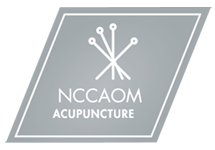
A recent study in the U.K. has found that Botox® can negatively impact a woman’s ability to orgasm.
That means Botox® is a “no go” for your “big O!”
This quote from Refinery29.com sums it up nicely.
Botox is often used to treat frown lines, and previous research has found this can lead to a reduction in depression, so researchers wanted to know: By impairing the facial expressions associated with sexual excitement, does Botox reduce women’s ability to enjoy sex? (The muscle groups often targeted in cosmetic Botox are the same ones associated with sexual excitement and orgasm, including frown and laughter lines, and the area around the jaw.)
Researchers followed a small sample of 24 women who’d had Botox (and were tested before and after treatment), and compared them with 12 women who’d had non-muscle restricting facial procedures, such as skin peels. The women were asked to complete various questionnaires relating to their sexual function, mood and ability to read others’ emotions.
The findings are enough to leave anyone furrowing their brow. The 13 women who’d had Botox on their frown lines reported reduced sexual satisfaction – orgasms were harder to achieve and less satisfying. There was also a “near significant” decline among women who’d been treated for crow’s feet and frown lines.The study concluded that curbing our ability to produce the facial expressions associated with sexual pleasure leads to reduced feelings of sexual pleasure. “This finding demonstrates the importance of facial expressions during sexual intercourse,” said the researchers.
“The results suggest that the facial expressions do not occur simply to communicate pleasure to a partner but they are an integral part of the feeling of pleasure and are important in the process of achieving orgasm,” the researchers continued. “This demonstrates an important role for facial feedback within sexual intercourse and it is potentially a previously unimagined significant negative impact from cosmetic [Botox] treatments.”
So, according to Traditional Chinese Medicine, how does Botox® stifle a woman’s orgasm? It all has to do with the Wood Element.


As you can see from the image above, the T-Zone area corresponds to the Liver.
Additionally, the outer corner region of the eyes is also related to the Wood Element. These are the most common areas where women choose to receive Botox® for frown lines and crow’s feet.
Botox® has a freezing/paralytic effect. As it’s injected into these areas of the face, it reflexively affects the functions of the Liver. Thus, it stifles the Liver’s mechanism of creating free flow of Qi. And when Qi doesn’t flow, neither does your “O.”
So, if you’d rather look younger and have more enjoyable sex, consider Aesthetic Acupuncture. You might just thank yourself later!
If you’d like more information on Aesthetic and Facial Acupuncture, call 970-416-9600 to schedule an Initial Consultation and Introductory Treatment.




